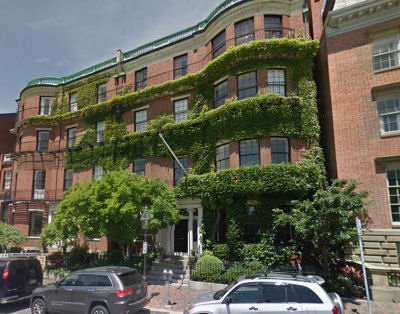
Henry Wadsworth Longfellow Wedding Place

Boston, MA 02108 United States
When, at twenty-eight, Henry Wadsworth Longfellow was offered one of the most prestigious professorships at Harvard, complete with a year of travel, he packed up his life in Maine and embarked on a tour of Europe. While in the Netherlands, his wife suffered a miscarriage and died, leaving Longfellow to drift unhappily through the rest of his travels. In Switzerland, however, his life was forever changed with an encounter with Frances “Fanny” Appleton. Longfellow immediately fell in love with Fanny, and would unsuccessfully court her for the following seven years, often walking from his quarters in Cambridge across the Boston Bridge to the Appleton residence on Beacon Street. When a new bridge was constructed on the spot, it was named the Longfellow Bridge for his many trips across its predecessor, one of which was immortalized in his poem “The Bridge.”
In 1839, Longfellow published his first novel, Hyperion, a fictionalized account of his unsuccessful courtship of Fanny—represented in the character Mary Ashburton—who was disdainful of his public declaration of love. Longfellow nevertheless claimed to have overcome his affection in the writing of it, saying in a letter that he was “no longer in the thrall of anyone.” Over the following years, he would continue to teach and write poetry, which was garnering increasing success. Nevertheless, 1843 began bleakly for Longfellow; it had been nearly a decade since the death of his first wife and he was lonely and disillusioned with work. In early letters, he described himself as “burnt out” and compares himself to one of Faust’s shades.
In April, however, after a long separation, Fanny invited him to visit her again, her affections apparently reversed. He courted her through April and into early May, when he received a letter in which Fanny finally agreed to marry him. Longfellow walked to see Fanny, “too restless to sit in a carriage,” he later wrote, and the two were married in July, in Appleton’s house at 39 Beacon Street.
Longfellow enjoyed nearly twenty years with Fanny, during which time he was able to quit his position at Harvard and write full time. Fanny bore six children; in 1861, on a day she recorded in her journal as “stifling,” Fanny was attempting to seal clippings of the children’s hair in envelopes for keepsakes when her dress caught fire. Though Longfellow tried to put out the blaze, sustaining serious burns, Fanny was killed by her injuries. Longfellow never remarried.
Upcoming Events
- There were no results found.
Events List Navigation
Events List Navigation
Did You Know?
Certain books were “banned in Boston” at least as far back as 1651, when one William Pynchon wrote a book criticizing Puritanism.